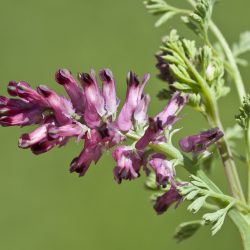Arthrospira platenis is the scientific name for the natural wonder that is spirulina.
Halfway between the plant and bacterial worlds, it is capable of photosynthesis. A plant, but at the same time a prokaryote, spirulina appeared on Earth more than 3.5 billion years ago. However, it has not evolved much to the present day.
Spirulina is a blue-green alga belonging to the cyanobacteria family and is about 250 mm long. It consists of mobile filaments of 10 to 12 mm, sometimes wound in a spiral, hence its common name. Under the microscope, spirulina looks like a tiny spring.
The current natural habitat of spirulina resembles the conditions on Earth when it first appeared. Warm, salty, highly alkaline and highly mineralised waters, which spirulina growers are trying to reproduce in our latitudes.
Its composition
Its richness and high digestibility explain why this phytoplankton has found a place in human nutrition since ancient times. It contains :
- proteins (60 to 70% of its dry mass)
- essential fatty acids gamma-linolenic and linoleic
- trace elements (especially iron)
- mineral salts
- vitamins (including B12, which is highly prized by vegetarians)
The nutritional value of spirulina has been demonstrated by serious research which has been carried out since the 1960s. A study published in the Journal of Nutrition and Food science ranks it as the top antioxidant food along with certain citrus fruits. Phycocyanine, responsible for the blue-green colour of spirulina, is notably adorned with all sorts of virtues: antioxidant, anti-free radical, anti-inflammatory, immunostimulant, favourable to the production of red blood cells, detoxifying for the liver, cell protector, and the list goes on!
A complete food, it deserves to be introduced into our daily diet for “exceptional” consumption.
Toning, protective, detoxifying, regenerating… and much more!
Spirulina has been shown to increase a person’s energy level, inducing a boost in general metabolic activity. Its iron content and its role in haematopoiesis also explain its fortifying character. It is an excellent stimulant and regulator of the immune system and plays a role in the fight against viruses.
Spirulina plays a detoxifying and regenerating role in the tissues. The liver and kidneys benefit from its consumption.
Its action on glycemic and lipid regulation makes it an ally in cases of diabetes, cholesterol and hyperlipidemia.
Spirulina improves the quality of the intestinal flora because it increases the saprophyte flora.
For everyone, every day
Thus, if there is an interest in consuming spirulina during cures, it is also very interesting to introduce it in our daily diet. For the first use, tablets are more suitable while for a daily consumption, powder or flakes are the most recommended, to be sprinkled in soups, cereals, fruit or vegetable juices or yoghurts. Spirulina is thus better assimilated by the body, especially if it is combined with vitamin C.
If it is particularly indicated for the periods of growth in the children, for the old people, the pregnant women, the sportsmen or the convalescents, each one among us, whatever our general condition and our specificities, will benefit from the contributions of the spiruline. Dr. Dupire, who has extensively experimented and documented research on spirulina, stresses that he has never observed any side effects or contraindications to spirulina consumption.
The risk incurred by consuming spirulina comes from its chelating potential (capture of a metal in the body) which can prove to be perverse if the spirulina comes from a culture close to impure waters (close to cities or polluting industries). The chelating power would not only be useless but also dangerous since spirulina would release undesirable materials into the body.
Also, the origin of spirulina is essential in your choice: ask about the production and drying methods, and choose a local producer. Many spirulina producers have settled in our regions in recent years, let’s give preference to their work and commitment!
A recent rediscovery
The consumption of spirulina has left traces in the history of pre-Columbian civilisations but also in Africa, notably with the Kanembous in the north of Lake Chad.
Although the first Western accounts mentioning spirulina date back to the 1940s, it was in the 1960s that Belgian researchers began to carry out the first analyses.
Since then, studies and experiments have continued, and many projects have been launched in the intertropical zone, promising a better future in the fight against malnutrition.
Delphine L., Naturopath







